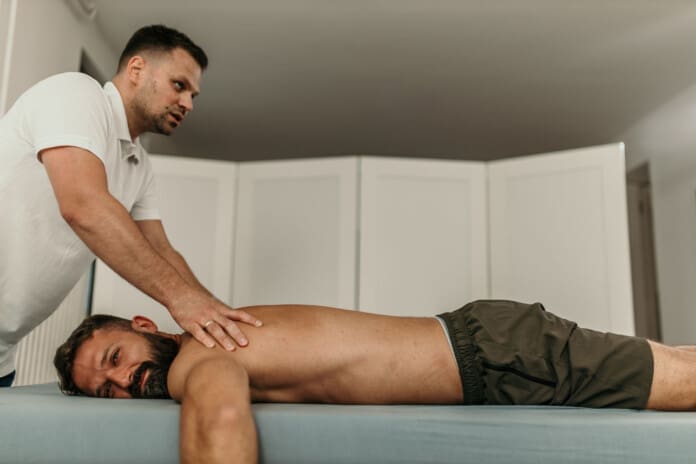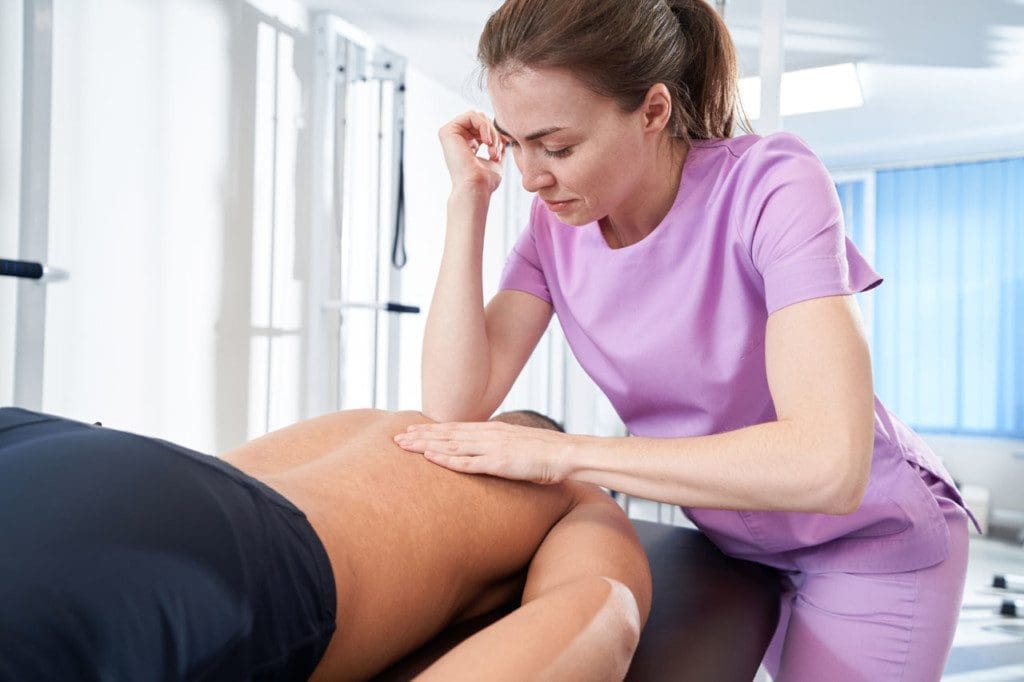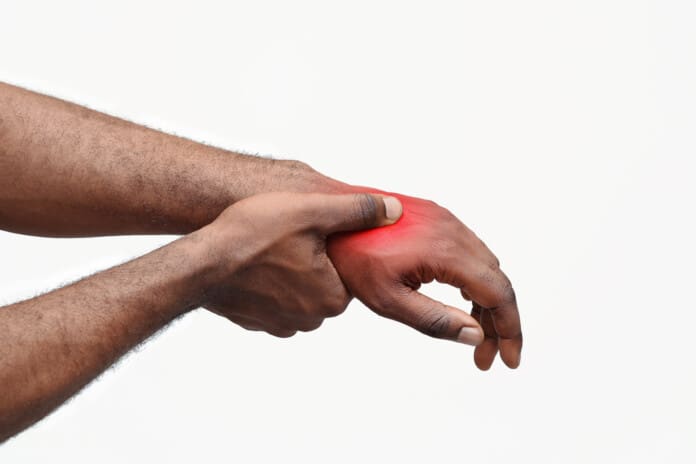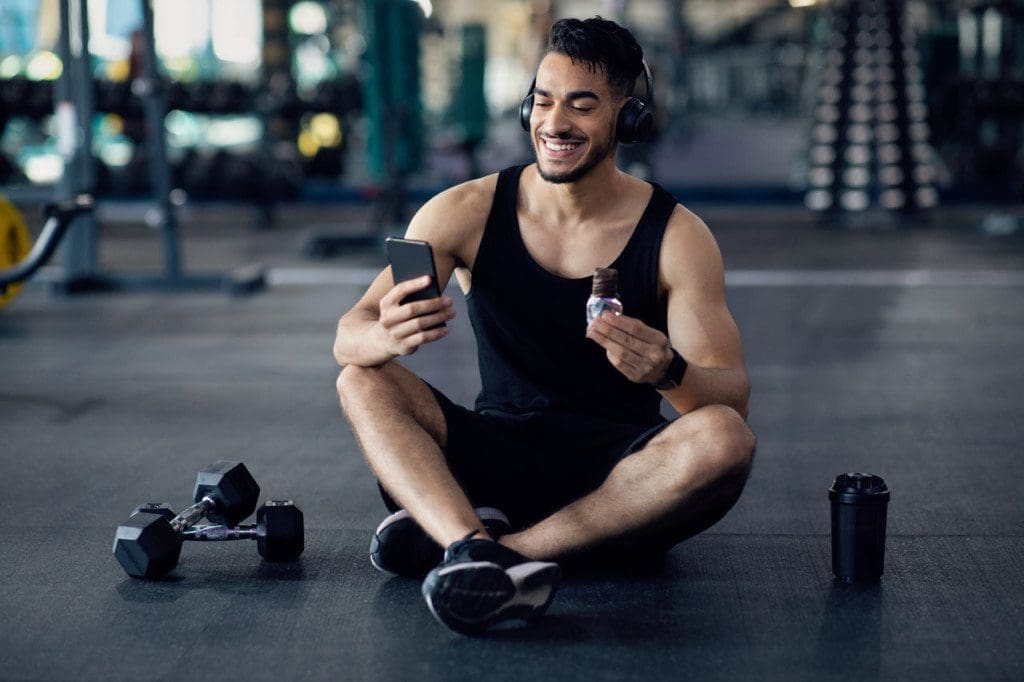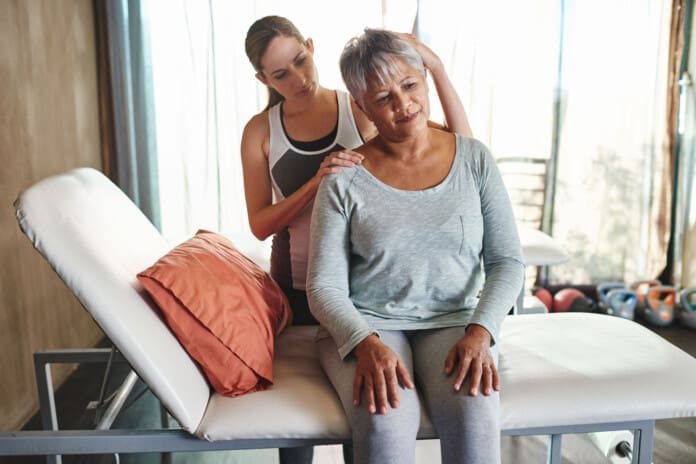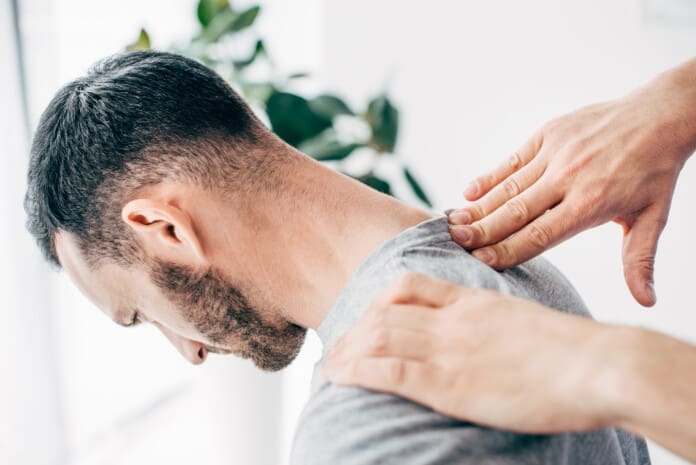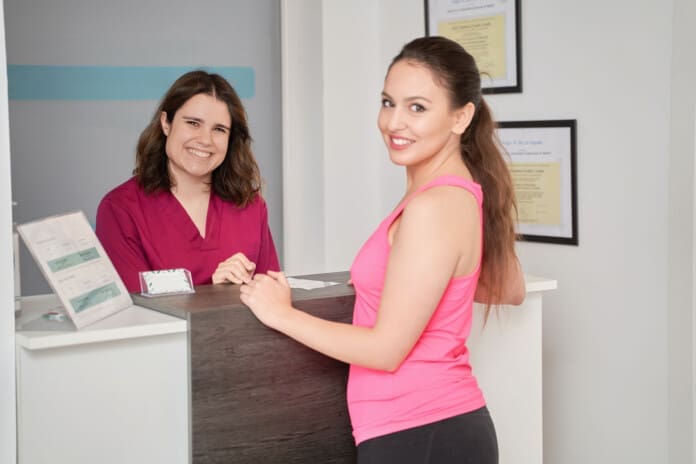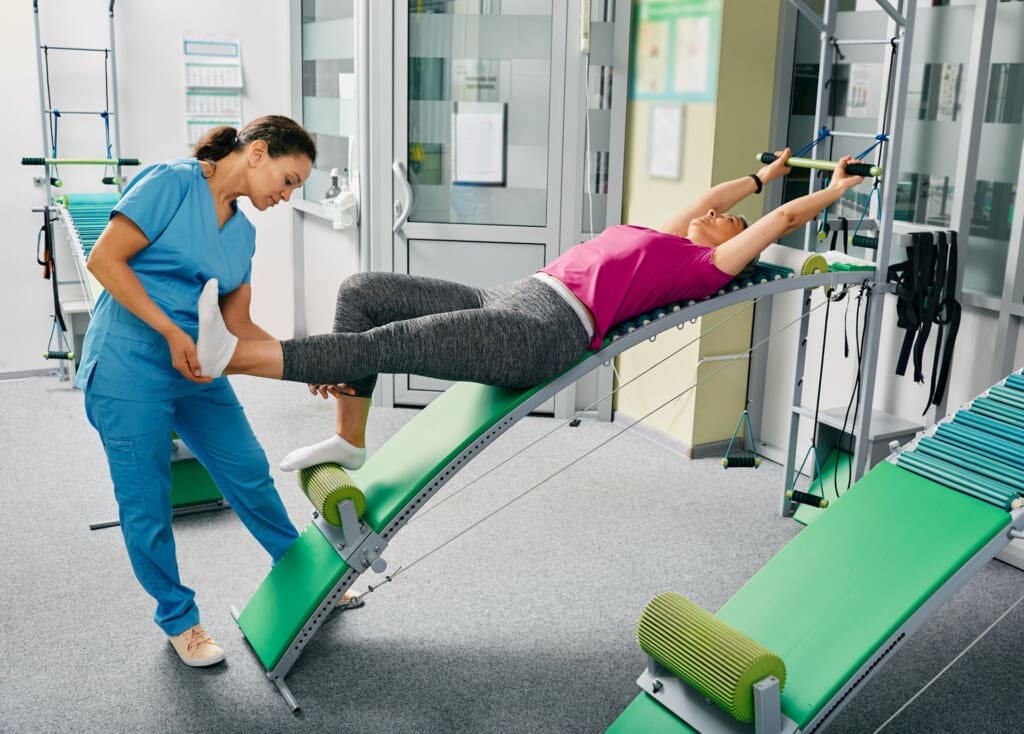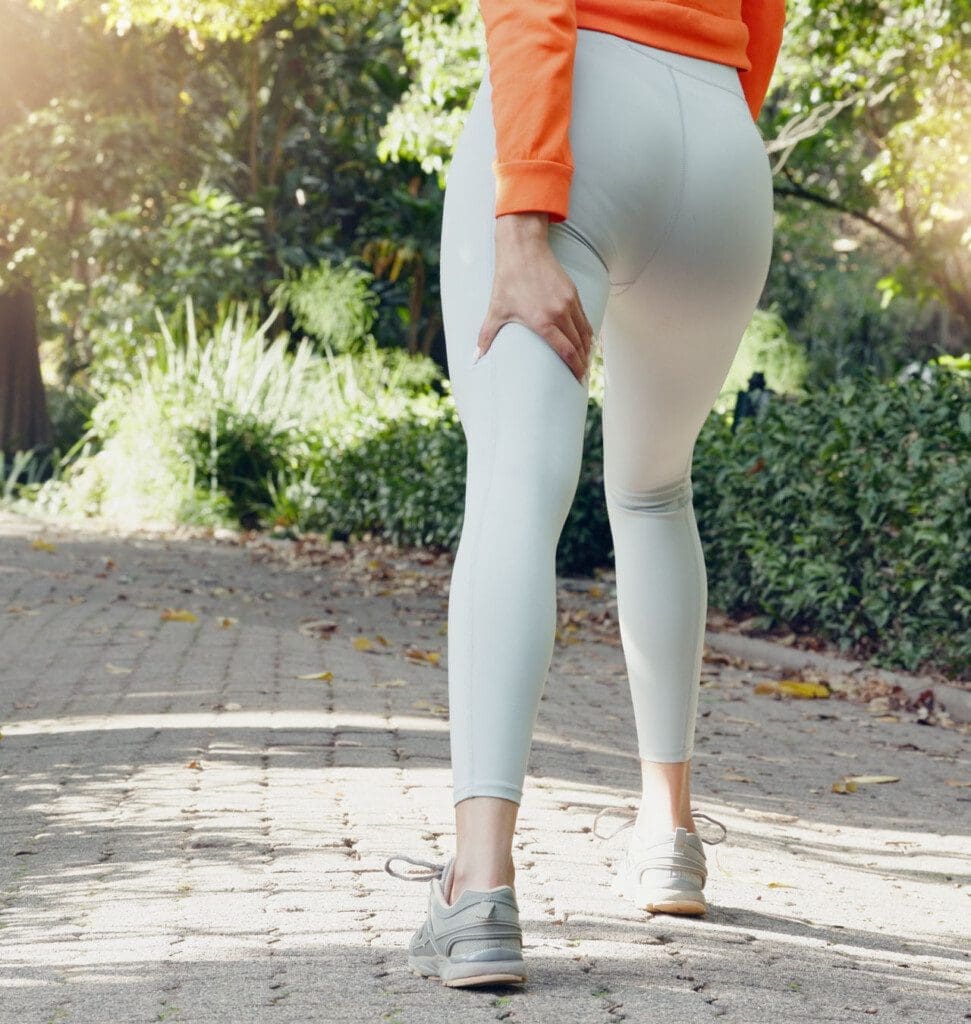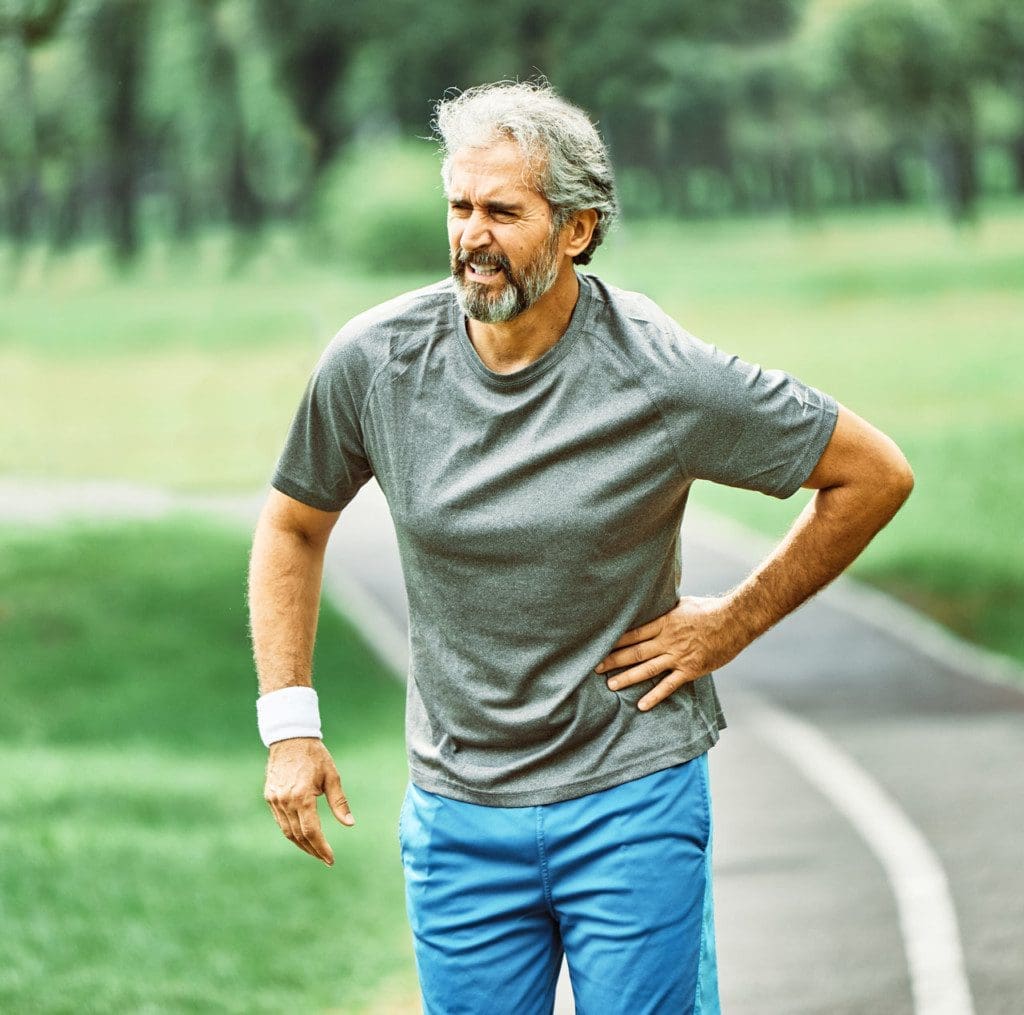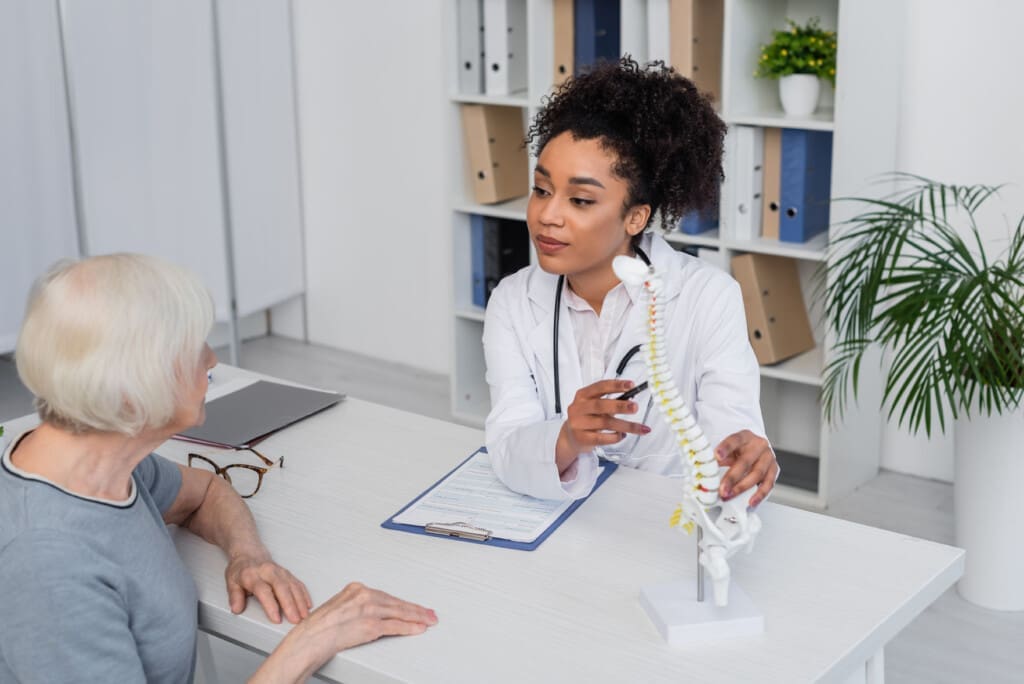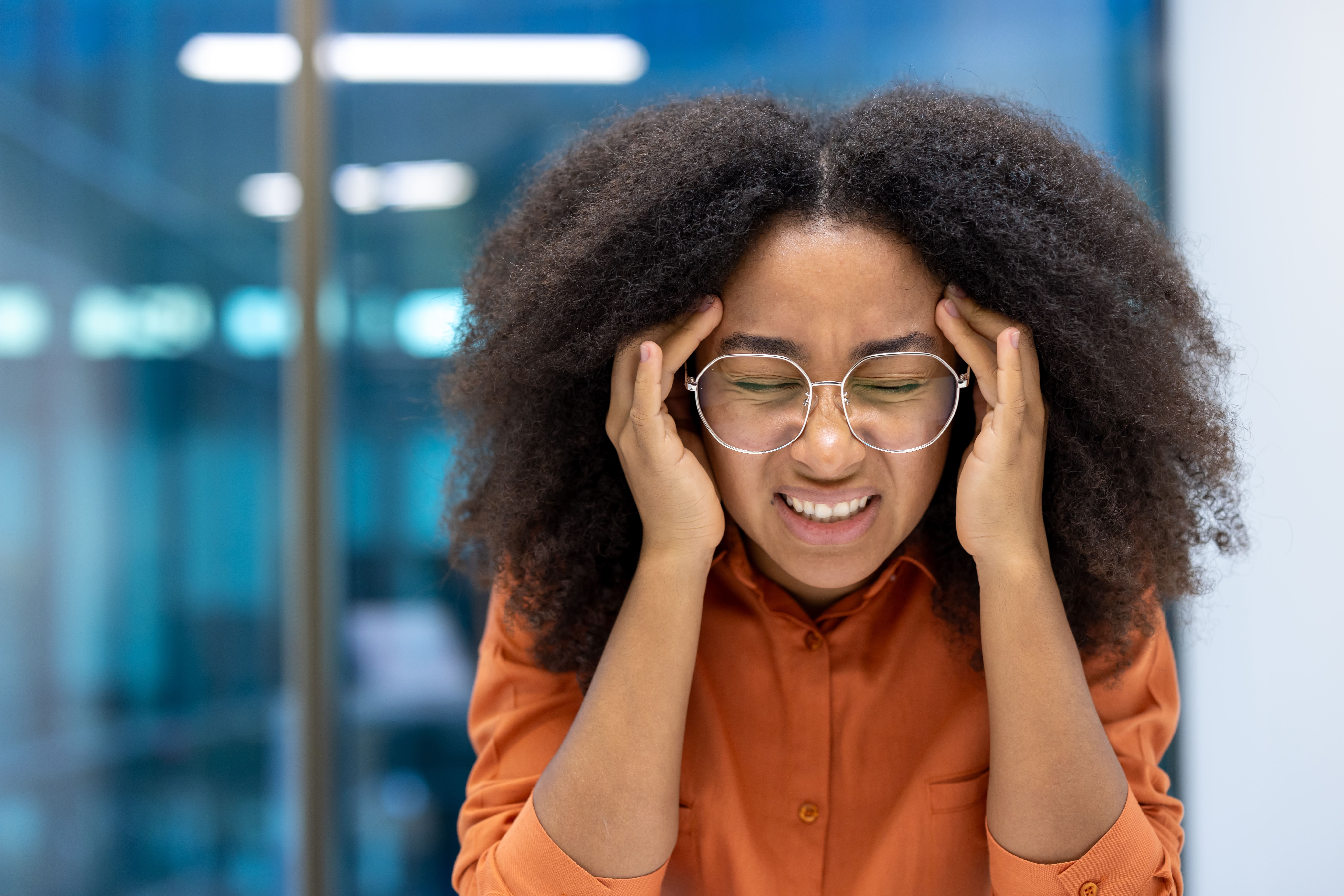Discover how targeted exercises can complement chiropractic care and alleviate muscle pain. Take control of your health today.
Table of Contents
Comprehensive Guide to Managing Sciatica and Musculoskeletal Pain Through Chiropractic Care, CrossFit, and Weight Training
Sciatica and musculoskeletal pain can feel like uninvited guests crashing your daily routine, turning simple tasks like sitting or walking into Herculean challenges. If you’ve ever winced from a sharp pain shooting down your leg or groaned at stubborn muscle aches, you’re in good company—many people in El Paso, TX, and beyond deal with these issues. But there’s hope! Dr. Alexander Jimenez, DC, APRN, FNP-BC, a leading chiropractor and personal injury specialist in El Paso, combines chiropractic care with exercises like CrossFit and weight training to help you kick pain to the curb. With a sprinkle of humor to keep things light (because who doesn’t need a laugh when their back’s acting up?), this guide dives deep into how these methods work, why they’re effective, and how you can make small changes to feel like a superhero again. Let’s explore the science, practical tips, and Dr. Jimenez’s expertise to get you moving pain-free!
Understanding Sciatica and Musculoskeletal Pain
What is Sciatica?
Sciatica isn’t just a fancy term for “ouch, my back!” It’s a condition caused by irritation or compression of the sciatic nerve, the body’s longest nerve, stretching from your lower back through your buttocks and down to your feet. Think of it as a superhighway for nerve signals—when it gets blocked, it’s like a traffic jam, causing pain, numbness, or tingling that radiates along its path. Symptoms can range from a mild ache to a jolt so sharp it feels like you stepped on a Lego in the dark.
Common causes include:
- Herniated Discs: When a disc’s soft inner material bulges out, it can press on the sciatic nerve, like an annoying neighbor leaning over the fence.
- Bone Spurs: Overgrowths of bone on the vertebrae can pinch the nerve, acting like speed bumps on your spine’s highway.
- Spinal Misalignments (Subluxations): Poor posture, pregnancy, or trauma can shift the spine, irritating the nerve.
- Other Culprits: Rarely, tumors or conditions like diabetes can compress the nerve, but these are less common.
Risk factors include age (spines wear out like old sneakers), obesity (extra weight stresses the spine), sedentary lifestyles (couch potatoes, beware!), and jobs involving heavy lifting or prolonged sitting. For example, sitting at a desk all day might seem harmless, but it’s like asking your spine to hold a grudge—it’ll eventually act out (Sciatica Pain and Treatment Clinic, n.d.).
Musculoskeletal Pain: The Body’s Cry for Help
Musculoskeletal pain affects muscles, bones, ligaments, tendons, or nerves, often triggered by environmental factors like poor ergonomics, repetitive motions, or injuries. Imagine your body as a well-oiled machine—when one part gets rusty, the whole system sputters. Repetitive strain from typing, carrying heavy loads, or even slipping on El Paso’s wet roads during the rainy season can lead to muscle imbalances or joint pain. These environmental factors overlap with sciatica’s risk profile, as both often stem from spinal stress or poor posture (Jimenez, n.d.).
References:
- Jimenez, A. (n.d.). Sciatica pain and treatment clinic. Sciatica.Clinic. https://sciatica.clinic/
- Sciatica Pain and Treatment Clinic. (n.d.). Sciatica pain and treatment clinic. Retrieved from https://www.elpasobackclinic.com/
The Power of Chiropractic Care for Pain Relief
How Chiropractic Care Works
Chiropractic care is like a tune-up for your spine, focusing on restoring alignment and function without scalpels or stitches. Dr. Jimenez and his team at the Sciatica Pain and Treatment Clinic in El Paso use gentle spinal adjustments to relieve pressure on the sciatic nerve and correct misalignments. These adjustments are like hitting the reset button on your spine, reducing inflammation and promoting natural healing.
The clinical rationale is simple: by addressing the root cause—whether it’s a herniated disc, bone spur, or subluxation—chiropractic care reduces nerve irritation and improves biomechanics. Research backs this up, showing that spinal manipulation can significantly reduce pain and improve function in patients with low back pain and sciatica (Ojala et al., 2021). It’s not about masking symptoms with pain pills; it’s about fixing the problem so your body can do its thing.
Benefits Beyond the Back
Chiropractic care isn’t just about saying “adios” to sciatica—it can improve your overall health. Patients often report better mobility, less muscle tension, and even more energy after treatment (Sciatica Pain and Treatment Clinic, n.d.). It’s like giving your body a high-five to get back in the game. Additionally, it’s non-invasive, so you won’t have to worry about surgical scars or lengthy recovery times. Who needs a hospital stay when you can walk out of the clinic feeling like you’ve shed a few pain points?
Dr. Jimenez’s Role in Personal Injury Cases
In El Paso, personal injuries from car accidents, workplace mishaps, or slip-and-falls are common culprits behind musculoskeletal pain. Dr. Jimenez stands out as a trusted practitioner, using advanced imaging (like X-rays or MRIs) and diagnostic evaluations to pinpoint injuries like herniated discs or soft tissue damage. His dual-scope procedures integrate medical and chiropractic techniques to create precise treatment plans (Jimenez, n.d.). For example, a car accident victim with sciatica might receive adjustments, massage, and a tailored exercise program to restore function.
Dr. Jimenez also bridges the gap between medical care and legal needs, providing detailed documentation for insurance claims or lawsuits. His expertise ensures patients get both relief and justice, making him a go-to figure for El Paso’s personal injury community (Jimenez, n.d.).
References:
- Jimenez, A. (n.d.). LinkedIn profile. LinkedIn. https://www.linkedin.com/in/dralexjimenez/
- Ojala, T., et al. (2021). Cost-effectiveness and outcomes of direct access to physical therapy for musculoskeletal disorders compared to physician-first access in the United States: Systematic review and meta-analysis. PubMed. https://pubmed.ncbi.nlm.nih.gov/33034899/
- Sciatica Pain and Treatment Clinic. (n.d.). Sciatica pain and treatment clinic. Retrieved from https://www.elpasobackclinic.com/
The Science of Motion- Video

CrossFit and Weight Training: Your Pain-Fighting Allies
Why Exercise is a Game-Changer
Exercise is like the secret sauce for managing musculoskeletal pain—it strengthens muscles, boosts flexibility, and improves circulation, all of which support spinal health. CrossFit and weight training are particularly effective when guided by professionals. According to Muscle and Strength, both approaches build strength and resilience, but they target muscles differently, offering complementary benefits for pain relief (Muscle and Strength, n.d.). Think of CrossFit as a high-energy dance party for your muscles and weight training as a focused sculpting session—together, they’re a powerhouse for pain management.
CrossFit: Functional Fitness for Real Life
CrossFit is a high-intensity program that mimics everyday movements—like lifting, squatting, or pulling—making it perfect for tackling life’s challenges, from carrying groceries to chasing your runaway dog. Key CrossFit exercises that help with sciatica and musculoskeletal pain include:
- Air Squats, Front Squats, Back Squats: These strengthen the glutes, hamstrings, and quadriceps, which support the lower back and stabilize the pelvis. Strong glutes are like bodyguards for your sciatic nerve, reducing stress and irritation.
- Deadlifts: Target the posterior chain (hamstrings, glutes, lower back), improving spinal stability and reducing disc pressure. It’s like giving your spine a sturdy foundation to stand on.
- Kettlebell Swings: Enhance hip mobility and strengthen the core, which acts like a natural corset for your spine.
- Box Jumps: Build explosive power in the legs, improving lower body strength and coordination, which helps prevent compensatory pain.
These dynamic movements engage multiple muscle groups, promoting balanced strength and reducing muscle imbalances that contribute to sciatica. For example, a strong core (like the transverse abdominis) supports proper spinal alignment, taking pressure off the sciatic nerve (Muscle and Strength, n.d.).
Weight Training: Precision Muscle Building
Weight training focuses on specific muscle groups, allowing for targeted strengthening. It’s like using a chisel to sculpt your body, compared to CrossFit’s sledgehammer approach. Key exercises include:
- Leg Press: Strengthens quadriceps, hamstrings, and glutes, supporting pelvic stability and reducing lower back strain.
- Seated Row: Targets the upper back (rhomboids, trapezius), improving posture and reducing spinal stress.
- Lat Pulldown: Strengthens the latissimus dorsi, which supports upper body posture and spinal alignment.
- Calf Raises: Build calf strength, improve lower leg stability, and reduce compensatory pain in the back.
Weight training’s controlled approach allows for progressive overload—gradually increasing resistance to build muscle without aggravating symptoms. This is crucial for sciatica patients, as it strengthens supporting muscles safely (Kim et al., 2015).
The Science Behind Exercise for Pain Relief
The clinical rationale for combining CrossFit and weight training with chiropractic care is robust. Isometric exercises, such as planks or wall sits, can reduce low back pain by activating muscles without excessive movement, thereby minimizing nerve irritation (Kim et al., 2015). CrossFit’s dynamic movements improve functional capacity, while weight training enhances muscle endurance. Together, they address weaknesses like tight hip flexors or weak glutes, which are common culprits in sciatica and musculoskeletal pain. Additionally, exercise boosts endorphins, making you feel as though you have just won a gold medal (or at least survived Monday) (Shiri et al., 2013).
References:
- Kim, S. Y., et al. (2015). The Effects of Isometric Exercise Types on Pain and Muscle Activity in Patients with Low Back Pain. PubMed. https://pubmed.ncbi.nlm.nih.gov/26308727/
- Muscle and Strength. (n.d.). CrossFit vs. weight training. https://www.muscleandstrength.com/workouts/crossfit-vs-weight-training
- Shiri, R., et al. (2013). The effect of a single bout of exercise on energy and fatigue states: A systematic review and meta-analysis. Fatigue: Biomedicine, Health & Behavior, 1(4), 223-242. https://www.tandfonline.com/doi/abs/10.1080/21641846.2013.843266
Non-Surgical Treatments to Boost Recovery
Physical Therapy and Massage: The Dynamic Duo
Physical therapy and massage are like the Robin to chiropractic care’s Batman. Physical therapy uses targeted exercises to improve mobility and strength, while massage therapy relieves muscle tension and boosts circulation. For example, post-accident massage can help reduce soft tissue inflammation and even aid in de-stressing after a fender-bender (Sciatica Pain and Treatment Clinic, n.d.). These therapies work hand-in-hand with chiropractic adjustments to speed up recovery and keep pain at bay.
Backward and Forward Walking: Step in the Right Direction
Innovative treatments, such as backward walking, can improve gait and reduce pain in conditions like knee osteoarthritis, which often overlap with sciatica due to altered biomechanics (Koli et al., 2019). It’s like moonwalking your way to better health—minus the sparkly glove. Forward walking programs, such as the 6-minute walk test, also enhance functional capacity and reduce pain in patients with musculoskeletal issues (Bennell et al., 2019). These simple movements can be game-changers for improving mobility.
Breaking the Sedentary Cycle
A sedentary lifestyle is like kryptonite for your spine, increasing the risk of sciatica and musculoskeletal pain. Small behavioral changes—like setting a timer to stand every hour or joining a walking group—can make a big difference (Wilmot et al., 2016). Dr. Jimenez emphasizes practical strategies, like using a standing desk or taking short walks during lunch breaks, to combat couch-potato habits (Jimenez, n.d.). It’s like telling your body, “Hey, let’s not turn into a statue just yet!”
References:
- Bennell, K. L., et al. (2019). Clinical Associations and Prognostic Implications of the 6-Minute Walk Test in Rheumatoid Arthritis. PubMed. https://pubmed.ncbi.nlm.nih.gov/30905741/
- Koli, J., et al. (2019). Effect of 6-week retro or forward walking program on pain, functional disability, quadriceps muscle strength, and performance in individuals with knee osteoarthritis: A randomized controlled trial. PubMed. https://pubmed.ncbi.nlm.nih.gov/31191136/
- Wilmot, E. G., et al. (2016). When Adults Don’t Exercise: Behavioral Strategies to Increase Physical Activity in Sedentary Middle-Aged and Older Adults PubMed. https://pubmed.ncbi.nlm.nih.gov/27413642/
- Jimenez, A. (n.d.). Sciatica pain and treatment clinic. Sciatica.Clinic. https://sciatica.clinic/
- Sciatica Pain and Treatment Clinic. (n.d.). Sciatica pain and treatment clinic. Retrieved from https://www.elpasobackclinic.com/
The Musculoskeletal System: The Body’s Framework
How It All Works Together
The musculoskeletal system is like the scaffolding of a building—bones, muscles, ligaments, and tendons work together to keep you upright and moving. The spine, in particular, is the backbone (pun intended) of this system, housing the spinal cord and supporting the body’s weight. When the sciatic nerve gets irritated, it disrupts this harmony, causing pain that can ripple through muscles and joints.
Environmental factors, such as poor ergonomics (hunching over a laptop), repetitive motions (typing or lifting), or injuries (from car accidents), stress the musculoskeletal system, leading to pain. For example, weak glutes from prolonged sitting can cause the lower back to overcompensate, irritating the sciatic nerve. Chiropractic care, CrossFit, and weight training restore balance by strengthening muscles and aligning the spine, reducing these overlapping risk profiles (Hwang et al., 2015).
Non-Surgical Treatments for a Stronger System
Beyond chiropractic care and exercise, non-surgical treatments like physical therapy, massage, and walking programs strengthen the musculoskeletal system. For instance, the Timed Up and Go (TUG) test measures functional mobility, helping clinicians assess how well patients can move without pain (Barry et al., 2014). These treatments work together to reduce inflammation, improve joint function, and prevent future injuries, keeping your musculoskeletal system running like a well-oiled machine.
References:
- Barry, E., et al. (2014). Timed Up and Go (TUG) test: Normative reference values for ages 20 to 59 years and relationships with physical and mental health risk factors. PubMed. https://pubmed.ncbi.nlm.nih.gov/24652904/
- Hwang, J. A., et al. (2015). Time course of central and peripheral alterations after isometric neuromuscular electrical stimulation-induced muscle damage. PubMed. https://pubmed.ncbi.nlm.nih.gov/25156646/
Practical Tips for Daily Pain Management
Dr. Jimenez’s clinical insights offer easy ways to incorporate pain relief into your routine (Jimenez, n.d.):
- Morning Mobility Routine: Spend 5-10 minutes on dynamic stretches, such as leg swings or cat-cow stretches, to loosen tight muscles. It’s like giving your body a warm-up hug.
- Ergonomic Workspace: Use a chair with lumbar support and keep your monitor at eye level to avoid slouching. Your spine will thank you for not treating it like a question mark.
- Exercise Schedule: Try CrossFit (e.g., 3x/week squats and deadlifts) and weight training (e.g., 2x/week leg press and rows) under professional guidance to build strength safely.
- Hydration and Nutrition: Drink water like it’s your job and eat anti-inflammatory foods like salmon or berries to support recovery. Think of it as fuel for your inner superhero.
- Mindset Matters: A positive attitude can reduce perceived pain, so channel your inner optimist (Sciatica Pain and Treatment Clinic, n.d.). Laughter might not be the best medicine, but it sure helps!
These small changes are like adding pennies to a jar—over time, they add up to big improvements in pain and function.
References:
- Jimenez, A. (n.d.). Sciatica pain and treatment clinic. Sciatica.Clinic. https://sciatica.clinic/
- Sciatica Pain and Treatment Clinic. (n.d.). Sciatica pain and treatment clinic. Retrieved from https://www.elpasobackclinic.com/
Personal Injury Care in El Paso: Dr. Jimenez’s Expertise
El Paso’s busy roads and active lifestyle make personal injuries common, whether from car accidents, workplace incidents, or slips on wet pavement. Dr. Jimenez is a standout practitioner, using advanced imaging (e.g., MRI, CT scans) to identify injuries like herniated discs or soft tissue damage. His diagnostic evaluations assess nerve function and muscle strength, while dual-scope procedures combine medical and chiropractic techniques for precise treatment (Jimenez, n.d.).
For example, a car accident victim with sciatica might receive spinal adjustments to relieve nerve pressure, massage to reduce muscle tension, and a tailored CrossFit program to rebuild strength. Dr. Jimenez also provides detailed medical documentation for legal claims, acting as a liaison between patients and the legal system to ensure fair compensation (Jimenez, n.d.). His work is like a bridge, connecting healing with justice for El Paso’s personal injury victims.
References:
- Jimenez, A. (n.d.). LinkedIn profile. LinkedIn. https://www.linkedin.com/in/dralexjimenez/
Putting It All Together: A Holistic Approach to Pain Relief
Combining chiropractic care, CrossFit, weight training, and non-surgical treatments creates a holistic plan to tackle sciatica and musculoskeletal pain. Chiropractic adjustments address spinal misalignments, while exercises strengthen supporting muscles, and therapies like massage or walking programs enhance recovery. Small lifestyle changes, like improving posture or staying active, prevent pain from creeping back. Dr. Jimenez’s expertise ties it all together, offering personalized care that gets you back to living life on your terms.
Conclusion
Sciatica and musculoskeletal pain can make life feel like an uphill battle, but with the right tools, you can reclaim your mobility and comfort. Chiropractic care, led by experts like Dr. Alexander Jimenez in El Paso, TX, combined with CrossFit, weight training, and non-surgical treatments, offers a powerful path to relief. By addressing the root causes—whether it’s a pinched nerve, poor posture, or an injury—these methods restore balance to your musculoskeletal system and improve your overall health. Small changes, like stretching daily or eating anti-inflammatory foods, can make a big difference over time.
Serious Note and Disclaimer: This blog post is for informational purposes only and should not be taken as medical advice. Always consult a qualified healthcare provider, such as Dr. Jimenez at the Sciatica Pain and Treatment Clinic, before starting any treatment or exercise program. Individual results may vary, and professional guidance ensures safe, effective care tailored to your needs. For personalized treatment plans or to learn more, contact Dr. Jimenez’s team at (915) 412-6677 or visit https://sciatica.clinic/.
References:
- Barry, E., et al. (2014). Timed Up and Go (TUG) test: Normative reference values for ages 20 to 59 years and relationships with physical and mental health risk factors. PubMed. https://pubmed.ncbi.nlm.nih.gov/24652904/
- Bennell, K. L., et al. (2019). Clinical Associations and Prognostic Implications of the 6-Minute Walk Test in Rheumatoid Arthritis. PubMed. https://pubmed.ncbi.nlm.nih.gov/30905741/
- Hwang, J. A., et al. (2015). Time course of central and peripheral alterations after isometric neuromuscular electrical stimulation-induced muscle damage. PubMed. https://pubmed.ncbi.nlm.nih.gov/25156646/
- Jimenez, A. (n.d.). LinkedIn profile. LinkedIn. https://www.linkedin.com/in/dralexjimenez/
- Jimenez, A. (n.d.). Sciatica pain and treatment clinic. Sciatica.Clinic. https://sciatica.clinic/
- Kim, S. Y., et al. (2015). The Effects of Isometric Exercise Types on Pain and Muscle Activity in Patients with Low Back Pain. PubMed. https://pubmed.ncbi.nlm.nih.gov/26308727/
- Koli, J., et al. (2019). Effect of 6-week retro or forward walking program on pain, functional disability, quadriceps muscle strength, and performance in individuals with knee osteoarthritis: A randomized controlled trial. PubMed. https://pubmed.ncbi.nlm.nih.gov/31191136/
- Muscle and Strength. (n.d.). CrossFit vs. weight training. https://www.muscleandstrength.com/workouts/crossfit-vs-weight-training
- Ojala, T., et al. (2021). Cost-effectiveness and outcomes of direct access to physical therapy for musculoskeletal disorders compared to physician-first access in the United States: Systematic review and meta-analysis. PubMed. https://pubmed.ncbi.nlm.nih.gov/33034899/
- Sciatica Pain and Treatment Clinic. (n.d.). Sciatica pain and treatment clinic. Retrieved from https://www.elpasobackclinic.com/
- Shiri, R., et al. (2013). The effect of a single bout of exercise on energy and fatigue states: A systematic review and meta-analysis. Fatigue: Biomedicine, Health & Behavior, 1(4), 223-242. https://www.tandfonline.com/doi/abs/10.1080/21641846.2013.843266
- Wilmot, E. G., et al. (2016). When Adults Don’t Exercise: Behavioral Strategies to Increase Physical Activity in Sedentary Middle-Aged and Older Adults. PubMed. https://pubmed.ncbi.nlm.nih.gov/27413642/


